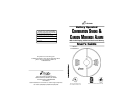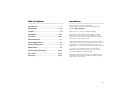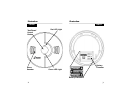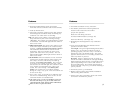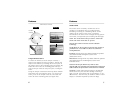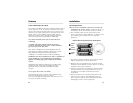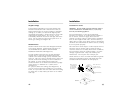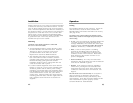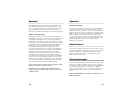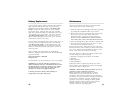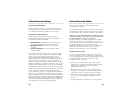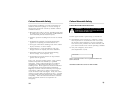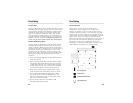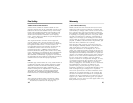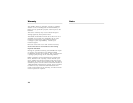
20
The CO sensor meets the alarm response time
requirements as follows:
At 70 PPM, the unit must alarm within 60-240 minutes.
At 150 PPM, the unit must alarm within 10-50 minutes.
At 400 PPM, the unit must alarm within 4-15 minutes.
NOTE:This carbon monoxide alarm is designed to detect
carbon monoxide gas from ANY source of combustion.
It is NOT designed to detect any other gas.
Fire departments, most utility companies and HVAC
contractors will perform CO inspections, some may
charge for this service. It’s advisable to inquire about
any applicable fees prior to having the service
performed. Kidde will not pay for, or reimburse, the
owner or user of this product, for any repair or
dispatch calls related to the alarm sounding.
Possible Sources of CO
CO can be produced when burning any fossil fuel,
such as gasoline, propane, natural gas, oil and wood.
It can be produced by any fuel-burning appliance that
is malfunctioning, improperly installed, or not
ventilated correctly, such as:
• Furnaces, gas ranges/stoves, gas clothes dryers,
water heaters, portable fuel burning space heaters,
fireplaces, wood-burning stoves and certain
swimming pool heaters.
• Blocked chimneys or flues, back drafting and
changes in air pressure, corroded or disconnected
vent pipes, loose or cracked furnace exchangers.
• Vehicles and other combustion engines running
in an open or closed garage, attached or near a
home.
• Charcoal/gas grill or hibachis in an enclosed area.
21
General CO Information
Carbon monoxide (CO) is a colourless, odorless, and
tasteless poison gas that can be fatal when inhaled.
CO inhibits the blood’s capacity to carry oxygen.
Symptoms of CO Poisoning
The following symptoms are related to carbon
monoxide poisoning and should be discussed with
ALL members of the household:
1. Mild Exposure: Headaches, running nose, sore
eyes, often described as "flu"-like symptoms.
2. Medium Exposure: Dizziness, drowsiness,
vomiting.
3. Extreme Exposure: Unconsciousness, brain
damage, death.
The above levels of exposure relate to healthy adults.
Levels differ for those at high risk. Exposure to high
levels of carbon monoxide can be fatal or cause
permanent damage and disabilities. Many cases of
reported carbon monoxide poisoning indicate that w h i l e
victims are aware they are not well, they become so
disoriented they are unable to save themselves by e i t h e r
exiting the building, or calling for assistance. Also, young
children and household pets may be the first effected.
Familiarization with the effects of each level is important.
Initial carbon monoxide poisoning symptoms are similar
to the flu with no fever and can include dizziness,
severe headaches, nausea, vomiting and disorientation.
Everyone is susceptible but experts agree that unborn
babies, pregnant women, senior citizens and people with
heart or respiratory problems are especially vulnerable. I f
symptoms of carbon monoxide poisoning a r e experienced
seek medical attention immediately. CO poisoning can
be determined by a carboxyhemoglobin test.
Carbon Monoxide Safety Carbon Monoxide Safety



